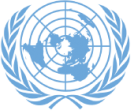Mr. Chairman,
Distinguished Delegates,
Ladies and Gentlemen,
It is a great honor for me to address the 11th session of the United Nations Forum on Forests. On behalf of my delegation, I would like to extend my sincere appreciation to the Secretariat of UNFF for organizing this very important session of UNFF.
As the only universal, intergovernmental policy forum on all areas and issues related to forests, the UNFF provides a unique opportunity for high-level government officials collaborate on forest issues at all levels. Mongolia is fully in support of strengthening the existing International Arrangement on Forests and its integration in the broader context of the development agenda beyond 2015.
2015 is a critical year for the international community. We take a moment to assess our progress and strengthen our commitments and efforts to advancing global development agenda. The international community is engaged in crafting the post-2015 sustainable development agenda. The importance of combating deforestation and promoting sustainable forest management has been recognized in the proposed Sustainable Development Goals. Two of the 17 proposed SDGs address forests.
In particular, the proposed goal on terrestrial ecosystems highlights the need to mobilize resources to finance sustainable forest management and provide adequate incentives to developing countries to advance such management, including for conservation and reforestation.
The significance of forests is interwoven into the SDGs beyond these two goals. Ending poverty, achieving food security, combating climate change and other development goals are tightly linked with the health of forests. Among these linkages, I would like to highlight the need for increased community based forest management as it exemplifies sustainability.
Mongolia is a low forest cover country, with under 8 percent of the country covered by forests. Despite low forest cover, Mongolians well understand and value the role of forests in a healthy ecosystem and ecological diversity.
The Mongolian Government has always been committed to sustainability and the conservation of forests. In 2006, the Mongolian government approved a new community-based natural resource management procedure, which included forest management. Since it’s inception, over 1100 community groups have been established and they manage around 5 % of forests. It is expected that by 2021, more than 20 percent of forest will be allocated and managed by local community groups under community management contracts. Nomadic and rural communities livelihoods are enhanced through forest management contracts and simultaneously the forests of Mongolia are effectively maintained and managed. These innovative and integrated initiatives embody the spirit of sustainable development and must be reinforced throughout the world.
Mongolia is devoted to sustainability in our national development goals. In June of last year, the Parliament of Mongolia passed a national Green Development Policy. The essence of the Green Development policy is similar to the proposed SDGs, but advocate localized targets and objectives. Deforestation and desertification are serious challenges in Mongolia’s environment and are properly addressed in the national Green Development Policy with ambitious targets to combat both. One of Mongolia’s significant forest areas is the arid forest and shrub land in the south-southwest deserts. The Saxual tree, an almost leafless woody shrub protects the fragile desert soils from wind erosion. 70 percent of Mongolia’s territory is affected by some degree of desertification and sustainable management of Saxual forests is key to combating desertification.
The challenges we face in each of our countries are not completely unique, especially when it is in regard to our shared natural environment. Mongolia’s largest forests are mainly located in the north-central parts of the country, forming a transition zone between the Great Siberian boreal forest and the Central Asian steppe desert. The health of Mongolia’s northern forests is critical to both the Siberian forests and Central Asian steppe deserts. Forests serve as a carbon sink for the Earth’s atmosphere and are not confined by national boundaries. We all have a shared interest to protect and conserve our forests.
Finally Mr. Chairman, we would like to reiterate our commitment to a strengthened International Arrangement on Forests Beyond 2015.
I thank you


